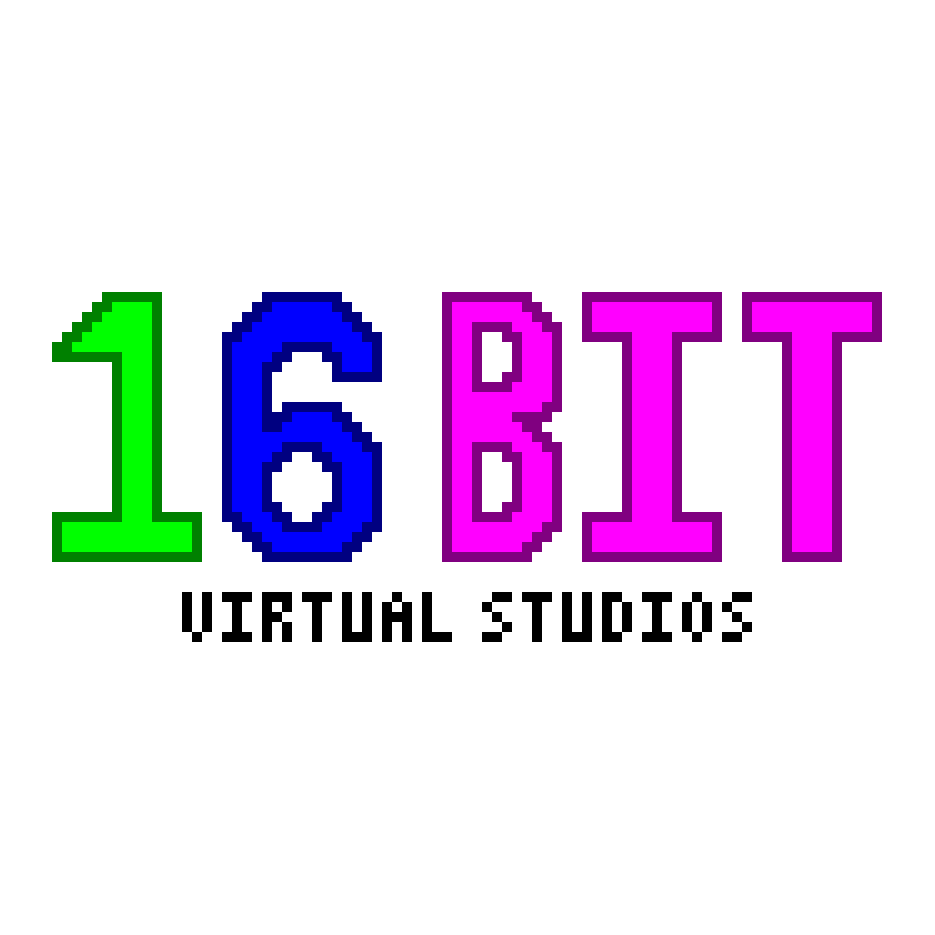Why is this thread getting flooded with people saying how they can’t use Linux? Isn’t that a little odd coming from a Linux community?
Because on lemmy a post getting 100 up votes is enough to end up somewhere high on all, so your seeing people from outside of the Linux community in here.
That’s why I’m here, front page.
I would say “people don’t see the community a post is in before commenting?” But of course they don’t. :'(
People outside of the community are allowed to have a different experience than those within it.
Of course, but sometimes communities have a specific context that is important to be aware of. Just to give an extreme examples: Communities like unpopular opinion, that you should upvote if you do not agree with that opinion. Or circle jerks communities that the point is to be tongue and cheek about the particular subject. Or the nosleep community that, if am not mistaken the name, everyone has to interact with the post in character as if it was real.
The title of this post is “I Don’t See a Reason to Switch to Windows from Linux Anymore in 2025”, surely that invites discussion?
I read the combo before my original reply as “there is a bunch of people with no interest in Linux or that just hates Linux coming to a Linux community just to say that Linux sucks”. I feel like that if it was a more general technology sub it is fair, but in a Linux community is more weird, like people interested in Linux will discuss its shortcomings in a more positive way not just being dismissive. But I may be interpreting things wrong.
Hiya, intending to switch from Windows to Linux (it looks like I’ll finally be pulling the proverbial trigger this holiday season!) but I got here via Local sorted by Active on programming.dev. I am not subbed to Linux.
In other words, people outside the target audience are getting exposed to this post.
I don’t see why. You can be interested in Linux and like some aspects of it but still get annoyed at the blinkered zealots claiming that there’s no reason to use Windows.
There is no reason for some people to use Windows
Definitely true for a minority. Not the way most of these articles are presented though (including this one).
I never had a reason to use Windows outside of job requirements. If I bothered I could find a job without such requierements.
Lemmy is weird and this showed up on my ‘all’ page yesterday and again today. So that’s where you’re probably getting those comments (and mine!)
But I’ve been using Linux servers long enough and switching to Linux for my workstation once i finish getting parts for a new build
Ignore the trolls
Like most articles on itsfoss, this one is only a notch over clickbait — a kernel of an idea not fully developed, written with the last minute energy of a student who pushed off the assignment until right before deadline — but I’ll be damned if that title isn’t beautifully turned.
I haven’t had to have Windows installed for more than a decade, but on recent occasion I’ve borrowed Windows and Mac computers for work. Those revisits didn’t give me reason to switch back, only to long for my lean Arch install.
As the next major version of Windows approaches like a Santa down the chimney with all sorts of “AI”-infested gadgets in his sack, I do hope more will make the more often mentioned switch to a Linux distro from the
advertising platformOS that came with their computer.But this headline deliciously reminds us that there is already a good chunk of users who made the jump, or are sitting on the dual booting fence, one boot (sorry!) on either side. This article is for them, yes, but also a gentle nudge for those still gathering courage.
At this stage, it is time to seriously change the perspective of that switch. The single reason for switching from Windows to Linux is … the utter state of Windows. Only the most blinkered of tech journos can continue to pretend that all is well on Windows, and not at all a sophisticated malware infection.
So bravo itsfoss for the clever barb, less so for the depth of the article itself.
I like the writing style of It’s Foss. They don’t make there articles dry and the tone is always positive and honest.
I think the Linux switch will heavily depend on your work flow and whether you like to tinker at all. I think It’s Foss is right to say that for some Windows is not an option. People like me use a lot of Linux tools and apps.
I agree that the tone of their articles helps push the quality above some other tech blogs. At the very least they’re sincere!
Windows is no longer an option for me either — I had made a conscious effort to use FLOSS apps even before switching, so there wasn’t much holding me back. And, as you say, once I’d started modifying system settings to disable Microsoft telemetry, I was already at Linux tinkerer levels…
i never saw one to begin with
deleted by creator
I use X11 with Nvidia without issue. While I like the idea of Wayland, and it being pushed a lot now, it really remains beta software. While I think it’s good Wayland is being focused on and promoted by the distros and DEs, I think it’s a bit of a distraction from Linux as a whole.
I’ve had to switch back to X11 on both Nvidia and AMD devices due to bugs or compatibility issues in Wayland.
I agree about VR - I keep dual boot windows on my PC and VR is about the only thing I use it for now. But the result is I just use VR less.
I dual boot Windows for VR and Fusion360. Do alternatives exist? Yes, but it’s just not something I want to spend hours tinkering with for what I perceive to be a worse experience.
I tried ALVR but it kept disconnecting if it connected at all. VD on Windows works flawlessly every time.
deleted by creator
Thanks for the heads up. It looks like it’s called ElectricMaple. I’ll definitely give it a go, although having no updates on the main branch in 6 months doesn’t fill me with confidence.
I suspect your issues stem not from hardware incompatibility but outdated kernel/applications. If i had to guess you run one of the ‘stable’ distros. Which translates to dealing with bugs for longer.
How out of touch are you? Thry are using the most up to date repo.
Nix has the largest and most updated repo of all of them by a large factor according to live stats.
Ah yes nix… The famously immutable distro. Yeah 100% pebcac.
Tbh running AMD isn’t easier. For my workload I needed OpenCL and when it wasn’t installed by default, and wasn’t apart of apt package manager. I had to follow a script which involves amdgpu and only having OpenCL install if I wanted my machine stable.
Not the best experience.
For Nvidia some distros have installers built in to handle it. Like Mint where it’s one click and a restart and I have everything.
deleted by creator
The best way to use AMD GPU compute is to use containers. Keep in mind AMD only really has good performance on newer cards.
I never had any major issues with nvidia and VR is improving aswell
deleted by creator
I am using the latest proprietary driver on a gtx 1650 gpu and my distro cachyos preinstalls it
It’s mostly people on older cards with those problems I guess
Me for example on my GTX 1080 can’t use G-Sync (monitor blacks out in specific fps ranges). Nvidia “fixed” this like 5 times already. Newer cards work correctly I guess?
I also get graphical bugs in Wayland after Nvidias final Wayland “fix”. Other people somehow do not experience this so I guess newer cards work correctly (again)
Imo Nvidia just didn’t bother fixing this on their old cards so there is a minority left with those problems which can be ghosted safely by Nvidia because “those bugs got fixed”
It’s not uncommon for Nvidia to ignore their normal users since the most money comes from other companies purchasing their GPUs anyway
deleted by creator
I have an rtx 3060, i don’t think that counts as old
Huh, that just makes everything weirder
I feel you, should have gone with AMD
Yeah, this is definitely my last Nvidia card
Nothing is stopping you from using more than one OS. Use NixOS for everything other than what you’re having problems with. And not using it at all won’t do anything to solve the problems, use it and try updated and new things every now and then, eventually it’ll work.
deleted by creator
Last round of nvidia drivers made a mess, nix has a wiki on the issues on how to fix them until they are resolved.
My reason is that VR gaming is not feasible on Linux, so I need to keep a Windows VM to play VR games.
why not?
Most VR headsets don’t work at all on Linux, and for those that do, most games don’t work anyway. For those that do work, they are unstable, and SteamVR itself is unstable and prone to crashes. Even when things work for a while, the frame rate is lower than on Windows, which is much more important for VR games.
So as much as flat games work perfectly on Linux nowadays, it’s just not there for VR.
I ask because it works fine for me
What sort of hardware are you using (gpu and headset)? I’m thinking of picking something up soon.
deleted by creator
Nice, thanks. I’m on nvidia. I was thinking about the quest simply because it is so much more affordable, and newer than the index. Only thing holding me back is I don’t have a meta account nor do I want to make one, even if it’s just for the quest.
Soooo many of these threads go like this
Op - “I have xyz problem on Linux”
Commentor - “I don’t have that problem I’m using amd”
Op - “yeah I’m using nvidia”
Nvidia is just anti-Linux lol
meta account would be necessary unless there’s another way to run developer tools
Let me give you 2 big reasons:
- Linux does not work with the particular hardware or software you want or need to use.
- It’s a PITA to just do basic stuff.
Linux Mint is very simple to use these days.
That depends entirely on what you’re trying to do.
Most things work without hiccups.
Once again, that’s fine so long as you don’t need the things that don’t work.
Ubuntu is even easier. If we’re trying to convert windows users on ease we really should be sending them the beginners kit
Mint is Ubuntu, minus controversial Canonical stuff, plus an extra layer of polish and a very nice DE that is Windows-like out of the box.
Controversial stuff and polish are fundamentally changes that make it that much harder to Google an error message and look at step by step fixes which is what most end users will need.
All mint adds for people who won’t bother to learn the differences (most people) is confusion
- Linux does not work with the particular hardware or software you want or need to use.
That’s a good reason
- It’s a PITA to just do basic stuff.
What’s outright bullshit so kinda obviated your argument. Sure, if downloading onto a thumb drive and rebooting a few times is hard becase you expect your OS to be preloaded then maybe but that wasn’t even your point.
Mint has a web browser, Office Software, Graphic Software, Music Players etc all loaded. Open up the Application Installer, a GUI and type in the obvious bar at the top for what you want, download and good to go.
Sure, if downloading onto a thumb drive and rebooting a few times is hard becase you expect your OS to be preloaded then maybe but that wasn’t even your point.
You’re right. It wasn’t. Not sure why you brought that up.
Open up the Application Installer, a GUI and type in the obvious bar at the top for what you want, download and good to go.
You’re intentionally misrepresenting the situation. That’s great if the software you’re looking for is available in the “application installer”. That is very often not the case. If it’s available at all, it’s often a .deb or .rpm or appimage, or you’re expected to compile it yourself from scratch.
AppImages won’t even run without some fuckery. And when you do that, they still have no icon and can’t be pinned in your app tray. Sure, you can install Gear Lever to greatly simplify this process if you know about it but it’s not typically not installed by default, which makes this process completely unintuitive.
And if they only make a .deb available, and you’re running Fedora, well fuck you.
These are all complications that simply don’t exist on Windows or Mac.
- It’s a PITA to just do basic stuff.
In my experience basic stuff like browsing files, editing documents, launching apps, installing apps, and obviously a million things using a web browser, are all easy and snappy in a fresh out of the box install of Linux Mint.
That’s cool. That’s not been my experience at all. Nor has it many many other people. It’s like the number 1 complaint, and the number of delusional people who try to pretend like it doesn’t exist is insane.
is it a pita because you expect it to function like windows or are there specific roadblocks youve encountered?
It’s a PITA because there are a dozen different installation methods, and if anything at all is not functioning perfectly, the only advice you’ll get is typing random commands into the terminal that report back some generic error that you have no idea what to do with.
i dont mean this in a judgemental way but that sounds like you dont understand or just dislike the process and conflate that with difficulty. the commands aren’t random, you just don’t know them. people who have learned how to use the OS (granted, not everyone has the time for that) generally know what commands do before they paste them in. I have a much easier time running a single command rather than navigating through layers of GUI but not everyone will share that preference
that sounds like you dont understand or just dislike the process and conflate that with difficulty
LOL and what exactly else would you call that? They’re random to me. I don’t know them, I don’t want to know them, I just want it to work like every other sensible OS where I can figure out how to complete basic tasks without needing a computer science degree. That’s what most people want and it’s why Linux will remain a niche OS by nerds and for nerds, because that’s the way they like it, which is fine, but let’s not try to gaslight people into believing there’s no reason people might want something else.
and what exactly else would you call that?
I’d call it baby duck syndrome. I hate hunting for exes online to install the most basic software and how there’s no way to update all of my apps with a single click but I understand the way I’m used to isn’t the same as the best way.
i literally said it’s up to preference, and I don’t have a CS degree, I did in fact figure it out
@Sunshine Agree! Left Windows decades ago. Except for some ocassional office compability snafus and still poor gaming, it does everything I need and well.
Gaming is catching up. Valve has done a tremendous job getting games supported with Proton on SteamOS
@naonintendois @craigcorbin catching up? From what I heard, Linux surpassed winlol in gaming for certain titles, but yes, if you take the average, there’s still a gap, and it’s becoming smaller and smaller
@bargo @naonintendois Awesome 👌
@naonintendois Cool. I’ll have to check that out. Thanks.
There will always be a game that is not supported.
Still poor gaming? I have all of my games working with zero effort on Steam. The only exception are my sim racing peripherals.
@AstralPath Good news. I tried a few games in October but the graphics were off. I’ll have to give them another try. My machine is pretty old, too, so I may need to upgrade. Thanks
Definitely give it a go! My machine isn’t crazy modern by any means but it’s decent.
- Web-based tools get the work done: agreed,especially when half of these web tools are Electron like number 5
- Plenty of distributions to suit your preference: my personal favorite thing about Linux
- Steam has a decent collection of Linux Games (& you may get a console): True,And outside of steam will work nicely aswell (like touhou 6 for example like Proton/soda does a great job of running touhou 6 patched with THCRAP)
- Proprietary choices on Linux (Better late than never): True and maybe even custom versions of wine (like elemental warriors fork and vanilla wine but vanilla wine cannot run complex apps tho)
- Technologies like Electron make it easier for app availability: Controversial opinion but True
Technologies like Electron make it easier for app availability: Controversial opinion but True
I do agree, but currently Electron is great for apps the way Flash was considered great for the web. It solves one problem, but creates a bunch more.
In itself, Electron is pretty bloated*, but I don’t dare check how many versions I have installed because different apps have stuck with older ones. I’d really like to see a less resource consuming, backward compatible alternative to Electron.
* From my thrifty perspective of keeping older hardware alive with Linux, that is. On your high grade, best-of-class gaming rig, mileage will definitely vary.
yeah true its spinning a instance of the Chromium browser which is where the bloat is at.
It’s quite a storage hog having multiple 500+ MB electron blobs. Unfortunately that’s a platform agnostic issue now.
That is true, definitely not an OS exclusive problem!
My daughter wants to play Sims 3 and use her Zune. I’m sure it’s possible to do both with enough work and time spent tracking down old utilities but how much time do I want to spend on that when I could just crank out a VM.
Did I just go back in time?
It’s funny to me that I couldn’t* even tell which post of mine this was a response to 😅
Yes, we are quite anachronistic in my house.
I’m surprised that Zunes even work anymore. I thought that Microsoft had that locked down so tight that it wouldn’t work without the Zune software on your PC (which likely hasn’t been updated since 2012).
I have multiple 120GB Zunes, one being my original and the others I bought for cheap when everyone was dumping them for their phones. They all work fine. You do have to track down the software; I keep the executable on my local file share. I just found my old brown 30GB Zune in storage. It has music from a bunch of local bands from the area I grew up in that are irreplaceable. Unfortunately the software can’t read it because the firmware is out of date, and it can’t be updated without wiping the music off it, which defeats the purpose. There’s a utility called zalternator that allows you to mount the zune as a disk but I haven’t been able to find a copy anywhere. I was going to make a Windows XP VM and install the 1.1 version of the Zune software and see if that works. I digress, they do work still, with a bit of effort. MS could have brought it all back after GotG3 and cashed in, but nope!
Using an older version of the software would work I think, or is there some other snag with Zune? Archive.org
After the 3rd (iirc) Guardians of the Galaxy movie referenced Zune, they have had a small resurgence
sims 3 works ootb with proton… why do you need your computer for a zune?
That is not my experience. And you need a PC with the Zune software to manage your media on the player.
I remember Zune did not play well with Linux at all. One time I plugged my Zune into a Linux laptop just hoping to charge it. From that point on, until I plugged it back into a Windows PC, the Zune would play one song then skip the next two. As in track 1, 4, 7, then roll over to 2, 5, 8, etc.
That was the only problem I had with my Zune though, RIP Zune, you were the best.
Oh wait except for the leap year glitch. Microsoft apparently didn’t think people would still use Zune in 2008 so all the Zunes stopped working for the duration of the leap day lol.
“Anymore”? I haven’t ever owned a Windows machine, and I haven’t used a Windows machine since 2015. I do have to fix a random issue on my wife’s work laptop about once a month.
I get that there are some things some people can’t do without and which keeps them in Windows: games, and requirements of their business (Word, Excel, PPT), but nothing about Linux has gotten significantly better in recent years. Incrementally, over there past decade, sure, but no big, recent change that might justify the title.
Except in the same way I’ve never needed Windows: in a very specific, individual way.
Coming from someone who just migrated myself and my family within the last year. Flatpaks were a big deal. I get people have their criticisms of it but wow, installing and updating apps is so much easier now compared to when I tried linux last and flatpak is probably the main reason why we are still on Linux today.
As a person who was all in on the AppImage distribution system (vs Flatpaks), I’m both sad and excited to see how well Flatpaks seem to be working out.
I guess they won that little competition in the end - which seems good, as there’s now a healthy standard we can focus on.
It’s genuinely great to now have widely accepted distribution independent packaging standards.
I’m glad Flatpack appears to be winning over the utterly horrible Snap, but I still don’t like it. I fear a day when it becomes difficult to get software that isn’t packaged in Flatpack, and I have good reason to: Ruby Gems. Long ago, I was big into Ruby, and was a major contributor (I authored one of the core standard libraries). Gems came along, and I hated them; eventually, for unrelated reasons, I stopped using Ruby altogether, and now when I encounter it, it’s impossible to use anything that doesn’t have Gem woven into it. Consequently, AFAIK, my current system has nothing Ruby installed on it - unless my OS package manager is doing it under the hood.
IMHO, Flatpacks are a really poor work-around for people supporting and using programming languages that don’t build software correctly. Rust and Go do it right: they build stand-alone executables. Flatpack adds literally no value to software built with these. They’re not the only languages that do this, but they’re the ones having their moment; any language that builds stand-alone, statically linked binaries would do.
I’m with you about AppImage; it would have been a better solution. Any packaging solution requiring extra software to be installed and a service to use is a bad design. I’d be objecting less if AppImage were emerging as the winner.
Incidentally, this is why Podman is superior to Docker: yes, you still need extra software to be installed, but there’s no system service with crazy, root-level permissions required to run containers with podman.
wait… are you arguing that gems are a bad thing???
2025 year of the minutes desktop 🤣
It’ll never happen because Linux zealots write this crap when 100% seriousness.
I said this in another thread but I set up a windows vm for someone because they needed it to run literally one scam tax software, otherwise they had no reason to switch back from Linux.
Even stuff like icue that uses windows drivers for peripherals will run in a VM with USB pass through.
And even then there’s a nice open source alternative for icue; you only need it if you want to edit hardware profiles.
US? Here in scandi tax seems to work well automatically, as in, we just log into the government website and click OK most years. Corrections are easy enough too, if you need it, but it’s usually not required.
I’ve been using Linux on my personal desktop system since 1997 and I think it’s great. However as a user I fucking hate Linux so much. It is so frustrating to use, it always breaks in weird ways.
It can do anything because you can configure so much and you can even go into the code and make thing your own. But at the same time it can’t do anything, there usually isn’t a basic framework to do what most people want. Each user is just supposed to figure it out for themselves and put their system together in a way that makes sense. Even someone like me who can understand all this crap and can read, understand and contribute to the code, doesn’t always want to do this. And most users wouldn’t be able to do it anyways. Let me just spend 12 hours of my own free time to figure out something that isn’t documented very well, with often wrong or outdated information, weird bugs with quirks and workaround and fun interactions with other bugs and workarounds I have on my system.
Just the other day I raged my head off because some kind of update broke my shit. There is this protocol that allows for the OS to tell monitors what brightness they need to be on. This is awesome for tablet/convertibles/laptops/all-in-ones, but for desktop systems I don’t really see the use case. But it can’t hurt the feature is there and you choose not to use it right? However it turned out this latest update had a nasty bug in it. At boot it somehow set all my monitors to 100% brightness, which was highly unpleasant and kept resetting it to 100% every boot. Not only that, it turned out my main monitor had too much clever for its own good. It has two modes of operating, one mode where the builtin OS inside the monitor does everything, it handles all the settings, profiles, color shit, protocols etc. The other way of operating is where the OS inside the computer does everything, they have a driver for Windows and some neat software that allows you to do everything in there. It has game recognition software and tweaks the monitor to work perfectly with that game etc. However me being a Linux user, they ofcourse don’t have any of that, not even a driver etc. but I know this when I selected the monitor so I made sure it could handle everything inside the monitor as well, so I could use it to it’s full potential on Linux. But this update broke all of that, because the monitor saw the OS was telling it to go to a certain brightness setting, so it assumed the OS inside the computer would be running the show and reverted back to some default safe profile until the software utility could tell it what to do. This made my monitor borderline unusable and flash bang me every reboot (which was a lot of times whilst I was trying to figure out how to fix it).
I put in a lot of hours and was able to somewhat consistently block the brightness control so the monitor could again be in charge. But not after the monitor was fed up with all my shit and just completely doing a factory reset, so I lost the personal profile I had been tweaking for years.
Now I know the monitor probably shouldn’t work this way and it’s bullshit the manufacturer doesn’t create Linux drivers and makes sure the software utility is available on Linux. But on the other hand, this is just the way the world is. Blaming it on some huge corporation that doesn’t give a shit and runs on cost/benefit calculations doesn’t fix my monitor. In my experience this is a huge problem in the Linux community (me included), we tend to get mad at other entities that cause the problem as an excuse for not fixing said problem. Which is perfectly valid from a person point of view, but very frustrating from a user point of view.
Most people who went through what I went through with my monitor wouldn’t be able to fix it and simply give up on using Linux forever. Or at least till they get a new monitor 5-10 years down the line.
Ok Grandpa let’s get you to bed
In all seriousness you have a fair point. Linux does occasionally have weird bugs if you are using something closer to upstream. Fedora does a pretty hood job of catching most stuff but it misses some things. If you want a more stable experience you want something that’s for of a LTS such as Linux Mint or Debian. Also there is nothing stopping you from rolling back a update.
People who come here to say Linux is not good or that this community is an echo chamber and get mad for pointing out obvious flaws in the OS miss two things:
-
The post is an opinion of someone. Notice the “I” in the title? That should give you some clue.
-
You are offended when people suggest that you learn and adapt to the OS, but you suggest that Linux should support your workflow without any effort on your part to learn the OS. Which is hypocritical to say the least.
-
But… I wanna play Fortnite.
I know it’s not a solution for everyone, but this is why I dusted off my Xbox. Fortnite on Xbox supports keyboard and mouse too
I don’t have an Xbox. Come on.
I figured, which is why I worded my comment the way I did.
It’s an option worth considering for games that are incompatible.
I mean, if the option is “just have a separate device that runs a Microsoft OS”, it might as well be my desktop.
I don’t exclusively mean Xbox. Playstation, Nintendo consoles, take your pick.
I get that, but the suggestion is still to have a dedicated device to play Fortnite and that’s exactly what I’m doing, the device just happens to be a PC running Windows.
Play better games lol (/s)





















